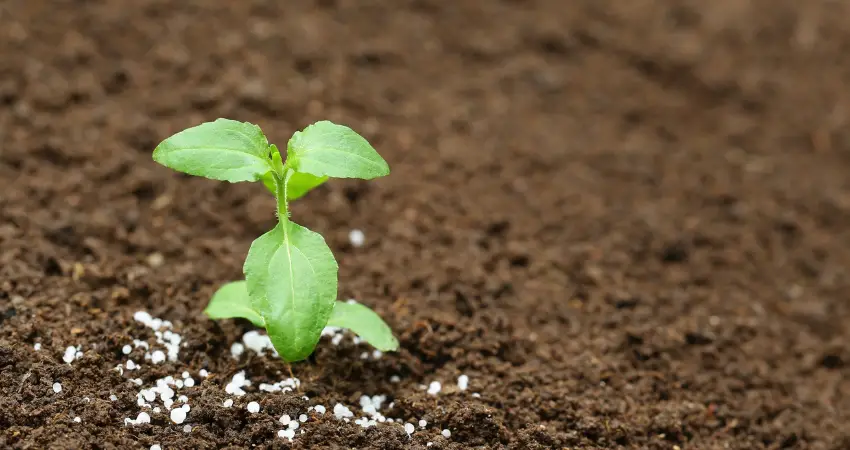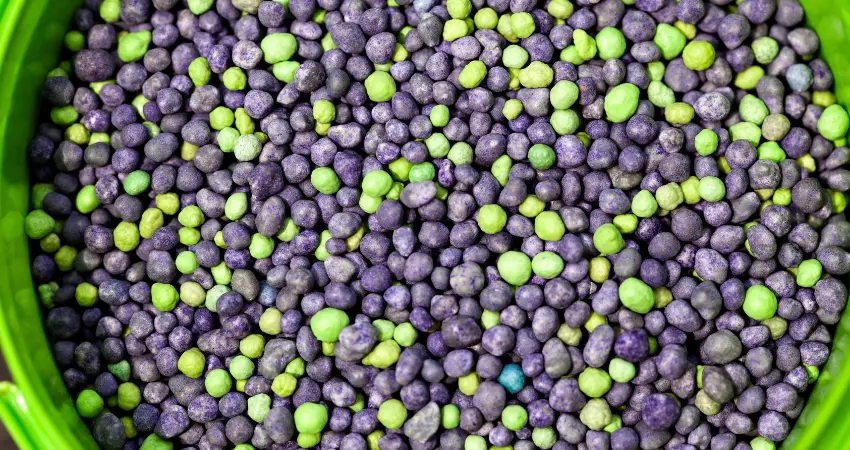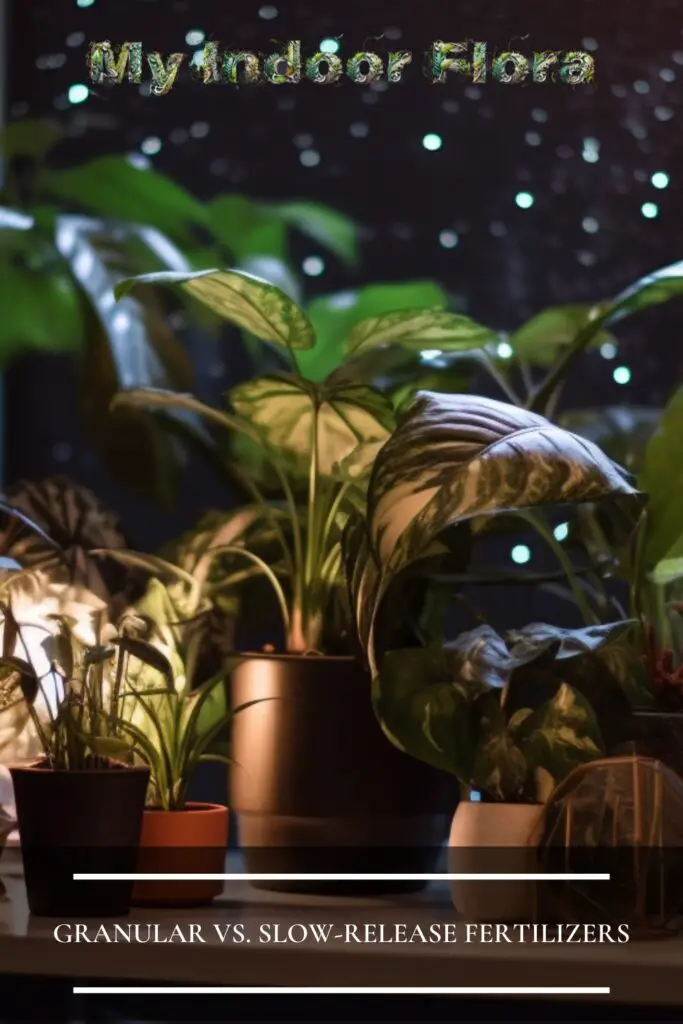Indoor plants not only add a touch of natural beauty to our living spaces, but they also contribute to our well-being by purifying the air and reducing stress. To keep these green companions thriving, it’s essential to provide them with the nutrients they need. One way to do so is through the use of granular and slow-release fertilizers.
In this comprehensive guide, we’ll explore the world of these fertilizers, discussing their characteristics, benefits, and best practices for application. We’ll help you navigate the options available, understand the differences between granular and slow-release fertilizers, and determine the most suitable choice for your indoor plants. With this knowledge, you’ll be well-equipped to cultivate a vibrant and healthy indoor garden.
Granular Fertilizers for Indoor Plants

Granular fertilizers are solid, dry fertilizers that come in small, easy-to-handle granules. They differ from liquid fertilizers, which must be mixed with water before application. Granular fertilizers can be organic, derived from natural sources, or inorganic, created through chemical processes. Some benefits of using granular fertilizers include ease of use, precise application, and a relatively lower cost compared to liquid fertilizers.
Types of Granular Fertilizers
Organic Granular Fertilizers
- Compost: A mixture of decomposed organic matter, compost provides a wide range of nutrients and improves soil structure. It’s an excellent all-around fertilizer for indoor plants.
- Bone meal: Derived from ground animal bones, bone meal is rich in phosphorus and helps promote strong root growth.
- Fish meal: Made from ground fish waste, fish meal is high in nitrogen and phosphorus, promoting leafy growth and healthy root systems.
- Blood meal: A byproduct of the meat processing industry, blood meal is high in nitrogen, which is essential for vigorous foliage growth.
Inorganic Granular Fertilizers
- Ammonium sulfate: A synthetic fertilizer, ammonium sulfate provides nitrogen and sulfur, promoting leafy growth and aiding in protein synthesis.
- Potassium chloride: This inorganic fertilizer provides plants with potassium, essential for overall growth, disease resistance, and water regulation.
- Superphosphate: Made from rock phosphate, superphosphate provides phosphorus, necessary for root development and flower production.
Application Methods and Rates for Granular Fertilizers
- Top dressing: Sprinkle granular fertilizer evenly over the soil surface, allowing nutrients to be absorbed as the plant is watered.
- Side dressing: Apply fertilizer in a shallow trench or furrow near the plant, ensuring that the roots can access the nutrients.
- Mixing with potting soil: Blend the granular fertilizer into the potting mix before planting, providing a consistent nutrient supply.
Nutrient Content and Release Patterns
Granular fertilizers provide essential macronutrients, including nitrogen (N), phosphorus (P), and potassium (K). They also supply micronutrients like iron (Fe), manganese (Mn), and zinc (Zn), which are crucial for plant health. The release patterns of granular fertilizers depend on factors such as temperature, moisture, and soil properties.
Pros and Cons of Using Granular Fertilizers
Advantages:
- Easy to handle and apply
- Cost-effective compared to liquid fertilizers
- Precise application rates
Disadvantages:
- May require more frequent applications
- Potential for nutrient leaching or runoff
- Inconsistent nutrient release patterns
Slow-Release Fertilizers for Indoor Plants

Slow-release fertilizers, also known as controlled-release fertilizers, provide nutrients to plants over an extended period. This gradual release helps prevent nutrient deficiencies and reduces the need for frequent applications. Slow-release fertilizers can be organic or inorganic, with different mechanisms for releasing nutrients.
Types of Slow-Release Fertilizers
Organic Slow-Release Fertilizers
- Alfalfa meal: Made from ground alfalfa plants, this fertilizer is rich in nitrogen and also provides trace elements. It slowly releases nutrients as it decomposes.
- Feather meal: A byproduct of the poultry industry, feather meal is high in nitrogen and breaks down slowly, providing a steady supply of nutrients.
- Seaweed extract: Derived from marine algae, seaweed extract is packed with micronutrients and plant hormones, promoting overall plant health and stress resistance.
Inorganic Slow-Release Fertilizers
- Polymer-coated fertilizers: These fertilizers have a synthetic polymer coating that controls the release of nutrients based on temperature and moisture.
- Sulfur-coated urea: Urea granules are coated with sulfur, which breaks down over time, gradually releasing nitrogen.
- Osmocote: A popular brand of slow-release fertilizer, Osmocote consists of nutrient-filled granules encased in a semi-permeable resin coating, allowing for controlled nutrient release.
Application Methods and Rates for Slow-Release Fertilizers
- Incorporation into potting soil: Mix slow-release fertilizer granules into the potting mix, providing a consistent supply of nutrients over time.
- Surface application: Spread the fertilizer evenly over the soil surface, allowing for gradual nutrient release as the plant is watered.
- Layering with potting soil: Apply a layer of slow-release fertilizer between layers of potting soil, ensuring the plant has access to nutrients as it grows.
Nutrient Content and Release Patterns
Like granular fertilizers, slow-release fertilizers provide essential macronutrients (N, P, K) and micronutrients (Fe, Mn, Zn). The release patterns depend on the specific type of fertilizer and its mechanism of nutrient release. Factors such as temperature, moisture, and soil properties also affect the rate of nutrient release.
Pros and Cons of Using Slow-Release Fertilizers
Advantages:
- Reduced need for frequent applications
- Lower risk of nutrient leaching or runoff
- Steady, consistent nutrient supply
Disadvantages:
- Generally more expensive than granular fertilizers
- Limited control over nutrient release rates
- May not provide sufficient nutrients for fast-growing plants
Granular Vs. Slow-Release Fertilizers for Indoor Plants

Before going into the details lets take a look at the comparison table to get a quick overview.
| Factor | Granular Fertilizers | Slow-Release Fertilizers |
|---|---|---|
| Plant species | Suitable for a wide range of plants | Suitable for a wide range of plants |
| Growth stage | May require adjustment for growth stages | Steady nutrient supply for various stages |
| Environmental conditions | Nutrient release influenced by conditions | More stable release in various conditions |
| Budget | Generally less expensive | Generally more expensive |
| Nutrient availability | Faster nutrient release | Gradual, consistent nutrient release |
| Release patterns | Inconsistent release patterns | Controlled release patterns |
| Application frequency | Requires more frequent applications | Less frequent applications needed |
| Environmental impact | Potential for nutrient leaching or runoff | Lower risk of nutrient leaching or runoff |
| Suitability for fast-growing plants | Better suited for high nutrient demands | May not provide sufficient nutrients |
Factors to Consider When Choosing a Fertilizer
- Plant species: Different plants have unique nutrient requirements and preferences.
- Growth stage: Young plants may need different nutrient ratios than mature, flowering, or fruiting plants.
- Environmental conditions: Temperature, humidity, and light levels can impact nutrient uptake and release.
- Budget: Consider the cost of the fertilizer and its application frequency.
Nutrient Availability and Release Patterns
Granular fertilizers tend to release nutrients more quickly than slow-release fertilizers, making them better suited for plants with high nutrient demands. Slow-release fertilizers provide a consistent supply of nutrients over time, making them ideal for plants with steady growth rates and long-term nutrient requirements.
Application Methods and Frequency
Granular fertilizers often require more frequent applications, while slow-release fertilizers provide a steady supply of nutrients with fewer applications. Consider the time and effort required for each application method when choosing a fertilizer.
Environmental Impact and Sustainability
Organic fertilizers are typically more environmentally friendly and sustainable, while inorganic fertilizers can contribute to nutrient leaching and runoff. Slow-release fertilizers help mitigate these issues by providing a controlled nutrient release.
Tips and Best Practices for Fertilizing Indoor Plants

1. Soil Testing and Nutrient Requirements
To ensure your indoor plants receive the appropriate nutrients, consider conducting a soil test to determine nutrient levels and pH. This will help you choose the correct fertilizer and application rates.
2. Proper Application Techniques
Follow the manufacturer’s recommendations for application rates and methods. Over-fertilizing can harm plants and lead to nutrient imbalances. Make sure to water your plants thoroughly after applying fertilizers to help distribute the nutrients evenly.
3. Monitoring and Adjusting Fertilization Schedules
Observe your plants for signs of nutrient deficiencies or over-fertilization. Adjust your fertilization schedule and application rates as needed to maintain optimal plant health.
4. Signs of Over-Fertilization and Nutrient Deficiencies
Over-fertilization can cause leaf burn, wilting, or even plant death. Nutrient deficiencies may manifest as yellowing leaves, stunted growth, or poor flowering. Keep an eye out for these symptoms and adjust your fertilizer regimen accordingly.
5. Organic vs. Inorganic Fertilizers
Consider the environmental impact and long-term sustainability of your chosen fertilizer. Organic fertilizers are generally more environmentally friendly, while inorganic fertilizers can provide a faster nutrient release.
6. Fertilizer Storage and Safety
Store fertilizers in a cool, dry place, away from children and pets. Follow the manufacturer’s guidelines for safe handling and disposal.
Bottom Line
Selecting the right fertilizer for your indoor plants is crucial for their health and growth. Granular and slow-release fertilizers offer unique benefits and application methods, so consider your plants’ specific needs when choosing the best option. By understanding the differences between these fertilizers, applying them correctly, and monitoring your plants’ health, you can create a thriving indoor garden. Remember to continually learn and experiment to find the perfect balance for your indoor plants’ needs.
